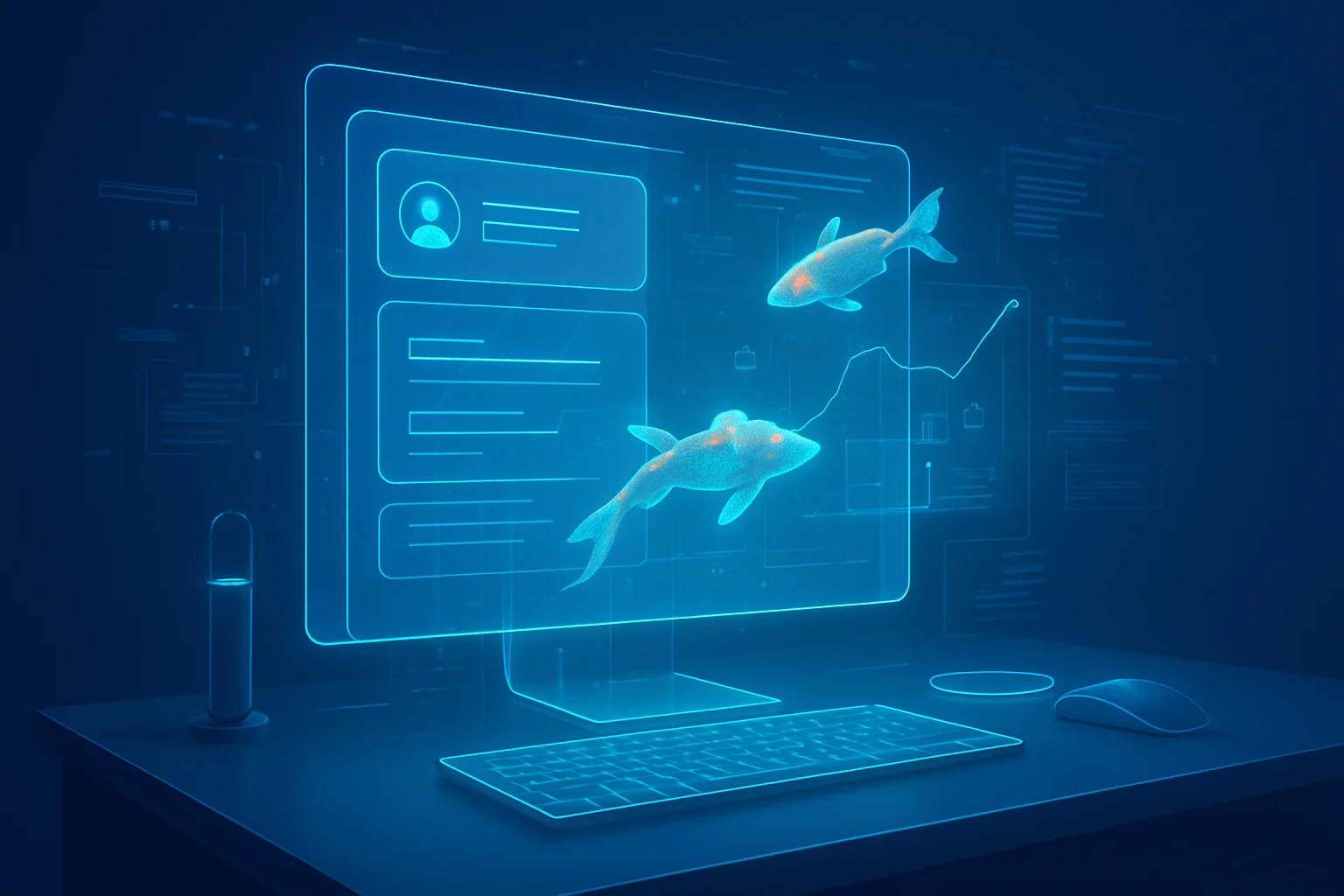How AI Transforms Client Intake Processes for Modern Service Providers

Picture this: a potential client visits your website, submits an inquiry, and receives a tailored response—all in a matter of minutes, not days. In today’s fast-paced world, where every minute counts and first impressions are crucial, the way service providers handle client intake can make or break relationships before they even begin. Manual onboarding processes are slow, error-prone, and resource-draining, often frustrating clients and staff alike. Enter artificial intelligence: a transformative force that’s not just automating tasks but reimagining how businesses connect, qualify, and serve new clients from the very first interaction. In this article, you’ll discover the real-world ways AI can streamline your client onboarding journey, from intelligent data collection to instant document management and automated follow-ups. We’ll explore practical, step-by-step use cases tailored for modern service businesses, and offer insights on how to implement these tools to boost efficiency, accuracy, and client satisfaction. Whether you manage a law firm, consultancy, or healthcare practice, you’ll gain actionable strategies to elevate your client experience—and free your team to focus on what truly matters.
Intelligent Pre-Qualification: Automating the First Point of Contact
The initial step in client onboarding is often a bottleneck—manually reviewing inquiries, qualifying leads, and gathering basic information. AI-powered chatbots and intelligent web forms are modernizing this process, acting as 24/7 assistants that engage prospective clients the moment they reach your site. These solutions use natural language processing (NLP) and machine learning to ask relevant questions, identify the nature of services required, and segment leads by priority or type—all without human intervention. AI tools can even interpret nuanced written communication, flag complex cases, and route urgent inquiries to the right team member.
Benefits:
- 24/7 availability: Engage and pre-qualify prospects anytime.
- Increased conversion rates by reducing time-to-response.
- Precise data capture improves downstream onboarding efficiency.
- Reduced human error and lost leads through automated workflows.
“AI-enabled intake forms don’t just capture basic info—they qualify, segment, and delight clients before you ever lift a finger.”
Mini Scenario:
A boutique law firm integrates an AI chatbot on their website. A potential client starts a chat at midnight, describing a legal issue. The chatbot asks targeted questions, determines the matter is time-sensitive, collects all necessary details, and schedules a next-day callback with the appropriate attorney—no staff member was involved until the critical step.
Personalized Document Collection and Verification
One of the slowest traditional onboarding steps is gathering and verifying client documents. Instead of endless email threads and manual reminders, AI-driven systems dynamically generate personalized document checklists based on the client’s profile and case type. Optical Character Recognition (OCR) and machine learning algorithms then instantly extract, validate, and cross-reference information from uploaded files, detecting missing or inconsistent data. Some platforms even integrate with government and financial databases to authenticate identity or corporate information in real-time.
Benefits:
- Drastically reduces time spent on document chasing and data entry.
- Improves compliance and reduces risks of incomplete files.
- Enhances client satisfaction through guided, user-friendly portals.
- Lowers the chance of onboarding delays due to missing or wrong information.
“Today’s AI-powered systems don’t just collect files; they intelligently coach clients through the process while ensuring accuracy and compliance.”
Mini Scenario:
A real estate agency leverages AI onboarding software. When a new client signs up to buy a property, the platform generates a custom list of required documents, sends secure upload links, and automatically checks identification and proof of funds using APIs connected to banking systems. The agents spend less time chasing paperwork, and the client moves faster toward closing.
Automated Conflict Checks and Regulatory Compliance
Service providers in law, finance, consulting, and healthcare must meet strict compliance, conflict, and risk assessment requirements before onboarding new clients. Manually searching databases, running background checks, and screening for legal or regulatory conflicts can be error-prone and time-consuming. AI automates these processes by instantly cross-referencing incoming client data against internal records, regulatory watchlists, and historical case files. Advanced systems use semantic analysis to identify hidden connections or nuanced red flags that human reviewers might overlook.
Benefits:
- Streamlines a typically laborious and repetitive compliance process.
- Reduces risk of costly compliance errors or oversights.
- Documents every check for robust audit trails.
- Increases compliance team efficiency, freeing them for higher-value work.
“Automated AI compliance checking doesn’t just boost efficiency—it can uncover hidden risks and connections that humans might miss, protecting your organization and your clients.”
Mini Scenario:
A financial advisory firm adopts an AI compliance tool for new client onboarding. Before finalizing an engagement, the AI scans public and proprietary watchlists, client relationship histories, and complex ownership structures. It flags a subtle potential conflict missed in manual review, allowing the firm to proactively address the issue before it becomes problematic.
Dynamic Workflow Assignment and Personalized Client Journeys
Not every client or project fits neatly into a one-size-fits-all onboarding funnel. AI workflow engines analyze the specifics of each case—using data points from intake, document verification, and compliance checks—to automatically assign the best-suited team members, schedule initial consultations, and suggest tailored next steps. Predictive analytics can anticipate client needs, segment them by preferred communication channels or urgency, and orchestrate the optimal onboarding sequence. This not only improves resource allocation but also ensures each client feels understood and valued from the outset.
Benefits:
- Enhances client experience through hyper-personalized engagement.
- Improves staff productivity by matching expertise to client needs.
- Reduces bottlenecks in scheduling and project hand-offs.
- Supports scalable, consistent service delivery even as business grows.
“AI-optimized workflows ensure no two client journeys are identical unless they need to be; personalization is the new standard for modern onboarding.”
Mini Scenario:
An IT services provider uses AI to route incoming projects. After initial intake and verification, the system assesses project complexity, selects a specialist project manager, and sends the client a custom onboarding roadmap. Automatic reminders and updates keep both team and client aligned throughout, with the AI adjusting workflow steps as new client requirements emerge.
FAQs
1. How do I ensure AI will handle sensitive client information securely and ethically?
Modern AI onboarding solutions adhere to strict data security protocols, including encryption at rest and in transit, secure user authentication, and regular compliance audits. Choose platforms with robust privacy certifications (such as SOC 2, ISO 27001, or HIPAA, if relevant for your industry) and configurable role-based access to minimize human exposure. Additionally, inform clients about your use of AI and data handling policies—transparency fosters trust.
2. Does implementing AI mean losing the “personal touch” in client interactions?
Not at all. AI actually enhances personalization by automating routine steps and freeing staff to focus on high-value, relationship-building moments. Intelligent systems can tailor onboarding communication, document requests, and timelines based on the individual client’s preferences and needs, creating a more personal and responsive experience than generic, manual processes.
3. What if my business has highly unique or frequently changing onboarding requirements?
Many leading AI intake solutions are designed for flexibility. They allow you to easily adjust workflows, update compliance checks, and create rule-based actions without extensive IT support. AI platforms with low-code or no-code interfaces empower non-technical users to customize forms, build document checklists, or re-sequence onboarding steps in response to regulatory changes or internal policy updates.
Key Takeaways
- AI-driven onboarding systems empower service businesses to grow without scaling up administrative headcount, ensuring standardized and error-resistant processes at any volume.
- Early integration of AI in onboarding improves the accuracy and richness of initial data, benefiting later client servicing, reporting, and analytics.
- Intelligent intake and workflow tools help businesses avoid the opportunity costs of slow follow-ups, lost leads, or compliance missteps by acting instantly and consistently.
- The adoption of AI in client onboarding clarifies performance metrics: audit trails and process analytics illuminate what’s working and what needs attention, enabling continuous process improvement.
- Implementing AI intake tools facilitates a competitive edge, allowing prompt, data-driven responses to market or regulatory shifts, while impressing clients with a seamless experience from the start.
- AI-powered segmentation enables targeted client communication and proactive service suggestions, opening new opportunities for upselling and long-term relationship building.
Embracing AI in your client onboarding isn’t just about efficiency—it’s about creating seamless, personalized experiences that set the right tone for every client relationship. By exploring automation, intuitive data collection, and smart communication tools, service businesses gain more time to focus on what truly matters: delivering value. As client expectations evolve, adopting these strategies keeps you ahead of the curve. Reflect on which step best suits your workflow and imagine the impact of streamlining those initial interactions. Ready to take the next step? Share your thoughts or experiences in the comments, and let’s shape the future of client service together!



